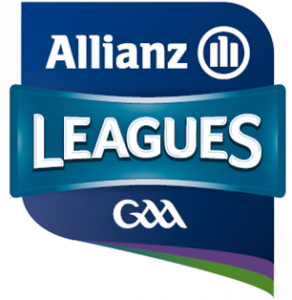
結果
| Date | R | 主隊 vs 客隊 | - |
|---|---|---|---|
| 04/06 18:15 | - | Clare vs 基爾肯尼 | 3.16(25)-1.20(23) |
| 03/24 16:00 | - | Clare vs Tipperary | 1.24(27)-2.13(19) |
| 03/23 16:30 | - | Limerick vs 基爾肯尼 | 1.15(18)-3.17(26) |
| 03/16 15:00 | - | Dublin vs Westmeath | View |
| 03/16 15:00 | - | Antrim vs Tipperary | View |
| 03/16 15:00 | - | Wexford vs Cork | View |
| 03/16 15:00 | - | Offaly vs Clare | View |
| 03/16 15:00 | - | Waterford vs 基爾肯尼 | View |
| 03/16 13:15 | - | Galway vs Limerick | 0.17(17)-0.17(17) |
| 03/10 15:30 | - | Waterford vs Wexford | 1.23(26)-2.23(29) |
| 03/10 13:30 | - | Galway vs Dublin | View |
| 03/10 13:30 | - | Clare vs 基爾肯尼 | 0.19(19)-0.16(16) |
Wikipedia - National Hurling League
The National Hurling League is an annual inter-county hurling competition featuring teams from Ireland and England. Founded in 1925 by the Gaelic Athletic Association, it operates on a system of promotion and relegation within the league system.
The league has 35 teams divided into six divisions, with either five or six teams in each division. Promotion and relegation between these divisions is a central feature of the league. Although primarily a competition for Irish teams, teams from England – currently Lancashire, London and Warwickshire – also take part, while in the past New York also fielded a team for the latter stages of the league. Teams representing subdivisions of counties, such as Fingal and South Down have also participated at various times.
The National Hurling League has been associated with a title sponsor since 1985. Ford, Royal Liver and Church & General have all served as sponsors of the league since then. The competition is currently sponsored by Allianz and is officially known as the Allianz Hurling League.
The league season runs from January to March with each team in the group playing each other once. Division 1 of the league features the top twelve hurling teams split into two divisions of six. A knock-out stage follows for the four top-placed teams in each division. The winners of the Division 1 title are awarded the Dr Croke Cup and are officially regarded as the National Hurling League champions.
The National Hurling League title has been won by 10 different teams, 9 of whom have won the title more than once. The all-time record-holders are Tipperary and Kilkenny, who have won the league on 19 occasions. Clare won the 2024 title.
History
Creation
Since 1887, the All-Ireland Championship had been steadily growing in interest and in participation. The championship, however, was largely confined to the summer months, resulting in a lack of top class inter-county action between September and April. Inter-county tournament games were popular as a way of filling the void, while some provinces organised their own pre-championship competitions, most notably the Thomond Feis in Munster. Several counties had also organised inter-club leagues as a means of supplementing the county championship by providing more games. While these had proved successful, it was decided to create a national senior inter-county league to provide games during the winter and spring months.
Beginnings
The inaugural National Hurling League began on 27 September 1925 and ended on 16 May 1926. Seven teams - Cork, Dublin, Galway. Kilkenny, Laois, Limerick and Tipperary - competed in a six-game single round-robin format. At the end of the group stage the top two teams contested the league final. Cork won the 1925–26 league following a 3–7 to 1–5 defeat of Dublin in the final.
Development
While no league took place during the 1926–27 season, the 1926–27 league featured nine teams. A single round-robin format was once again used, with each team playing eight games. The second league featured no final, with Tipperary being declared champions after securing 14 points from their group stage games.
The 1928-29 league featured twelve teams divided in two groups based on geographical position. The Eastern Division comprised five teams from the province of Leinster, while the Southwestern Division had seven teams from the province of Munster and Galway. The top teams in each division played off in the final to determine the champions. This format was used on a number of occasions until the 1934–35, when the league reverted to a straightforward one-group league with the top-placed team being declared the champions. This format was used again during the leagues in 1935–36 and 1936–37.
Ten teams entered the 1937–38 league, with two groups of five teams competing. A third group was added in 1938–39 as the number of teams increased to thirteen. These formats were regularly used over the following seasons, depending on the number of teams participating.
Between 1941 and 1945 the league was suspended due to the Emergency.
The 1955–56 league saw the introduction of a major change in format. As a result of a lack of interest from defeated first-round teams in recent years, Central Council introduced a two-division league featuring a new system of relegation and promotion. Division 1 was confined to ten teams in two groups of five. The bottom-placed team in each group would play off to decide which of the two teams would be relegated. Division 2 was made up of the 'second tier' hurling teams and featured eight teams divided into two groups. Limerick became the first team to be relegated, while Antrim became the first team to gain promotion under the new system.
NHL Division 1 包括了三個主要的蓋爾運動項目:曲棍球、足球和手球。這些項目都是愛爾蘭文化中非常重要的一部分,並且在這個錦標賽中展現了最高水平的競技能力。
這個賽事吸引了來自全國各地的球隊參賽,包括都柏林、科克、基爾代爾和利默里克等城市的代表隊。這些球隊都是愛爾蘭最優秀的球隊之一,他們在比賽中展現出了極高的技術和戰術水平。
NHL Division 1 的比賽場地遍布全國各地,包括愛爾蘭最著名的體育場和運動場。每年,數千名球迷和觀眾湧入這些場地,為他們支持的球隊加油打氣。
這個賽事不僅僅是一個運動比賽,它還是一個展示愛爾蘭文化和傳統的平台。觀眾可以欣賞到蓋爾運動的獨特之處,包括球技、速度和力量的結合,以及球員之間的友誼和競爭。
NHL Division 1 是一個令人興奮和激動的賽事,無論是對於球迷還是運動員來說,都是一個不容錯過的盛事。無論您是蓋爾運動的愛好者還是對愛爾蘭文化感興趣的人,這個賽事都將帶給您一個難忘的體驗。